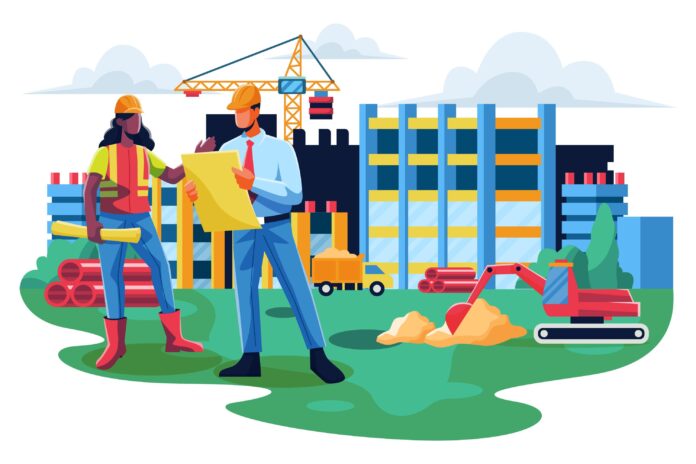Maintaining urban infrastructure is vital for city health and functionality. Advanced techniques can significantly address potential drainage issues, with modern technology enabling timely interventions and preventing major disruptions.
Urban infrastructure maintenance is a crucial aspect of city management. As cities grow, the need for efficient maintenance becomes more pressing. Employing advanced techniques in this area offers significant benefits, particularly for drainage systems. By adopting modern technology, authorities can identify problems before they escalate, ensuring that urban areas remain safe and functional. Among these techniques, the use of CCTV Drain Surveys plays a crucial role in early issue detection, allowing for prompt resolution and cost-saving measures.
Technology’s impact on urban infrastructure maintenance
Technological advancements have transformed urban infrastructure maintenance practices. The introduction of sophisticated tools has revolutionised how cities manage their extensive networks of roads, bridges, and drainage systems. Advanced imaging technologies now allow for detailed inspections that were previously unimaginable. By employing these technologies, cities can perform thorough evaluations without disrupting daily activities.
One key innovation in this field is the use of imaging and mapping techniques for drainage systems. These methods provide precise visuals of underground infrastructures, revealing blockages or structural weaknesses that are not visible on the surface. With this level of detail, maintenance teams can address issues more efficiently and accurately.
By harnessing such technology, urban planners can proactively manage infrastructure needs. This proactive approach reduces the likelihood of severe disruptions, ensuring that cities remain vibrant and safe environments for their inhabitants.
The integration of artificial intelligence and machine learning algorithms has further enhanced the capabilities of modern maintenance systems. These intelligent systems can analyse vast amounts of data collected from sensors and inspection equipment, identifying patterns that might indicate developing problems. Predictive maintenance models can forecast when specific components are likely to fail, allowing maintenance crews to schedule interventions during off-peak hours. This data-driven approach not only improves efficiency but also extends the lifespan of infrastructure assets by ensuring they receive attention at optimal intervals rather than waiting for visible signs of deterioration.
Identifying issues before they become costly
Early identification of potential problems is essential to avoiding costly repairs. Regular inspections using modern technology enable city planners to spot drainage issues before they worsen. This foresight allows for targeted interventions that are both cost-effective and minimally invasive.
Proactive maintenance strategies often involve scheduled inspections that utilise high-tech equipment to monitor drainage systems continuously. This regular monitoring helps prevent minor issues from developing into significant challenges that could require extensive repair work.
The benefits extend beyond just financial savings; they also include environmental protection. By ensuring that drainage systems function optimally, cities can prevent flooding and other water-related issues that pose risks to both property and public safety.
Methods for analysing drainage systems
Various methods exist for analysing and maintaining effective drainage systems within urban settings. These include traditional manual inspections as well as more advanced technological solutions like sonar detection and laser profiling. Each technique offers unique insights into the condition of subterranean networks.
Accurate data collection is a cornerstone of effective drainage analysis. Tools such as geographic information systems (GIS) enable detailed mapping of drainage networks, allowing planners to visualise system-wide interactions and pinpoint areas requiring attention.
The integration of these methods into regular maintenance routines ensures comprehensive coverage and the ability to respond quickly to emerging concerns. As such, they play a critical role in maintaining the overall health of urban infrastructures.
Benefits of proactive maintenance strategies
Implementing proactive maintenance strategies yields significant long-term benefits for urban environments. By regularly assessing and maintaining drainage systems, cities can reduce the likelihood of catastrophic failures that disrupt daily life.
From an economic perspective, proactive maintenance minimises the need for emergency repairs, which are typically more expensive than planned interventions. Moreover, efficient drainage systems contribute to improved environmental outcomes by reducing flood risks and protecting local ecosystems from pollution.
There are numerous examples where proactive approaches have led to noticeable improvements in urban settings. Cities investing in regular inspections often experience fewer service interruptions and enhanced public satisfaction due to consistently reliable infrastructure services.
Challenges in urban drainage system maintenance
Despite advancements in technology, maintaining urban drainage systems presents several challenges. Aging infrastructure requires careful management to ensure continued performance while newer systems must be integrated seamlessly into existing networks.
One common challenge is ensuring access to all parts of a complex network for inspection purposes without causing disruption to city life. This requires innovative solutions like trenchless technology that allows for repairs without excavation.
The strategic implementation of solutions such as improved data analytics helps overcome these challenges by providing clearer insights into system performance. Through effective planning and resource allocation, cities can address these hurdles efficiently and sustainably.
Value of integrating advanced techniques in urban upkeep
The integration of advanced techniques into urban infrastructure maintenance is not merely beneficial but essential for sustainable city development. By adopting state-of-the-art methods for inspection and repair, cities can ensure their infrastructures are robust enough to meet current demands while remaining adaptable to future needs.
You should consider the myriad benefits associated with regular infrastructure inspections—ranging from financial savings to enhanced safety—and how they contribute to a city’s overall resilience against unforeseen events.

























